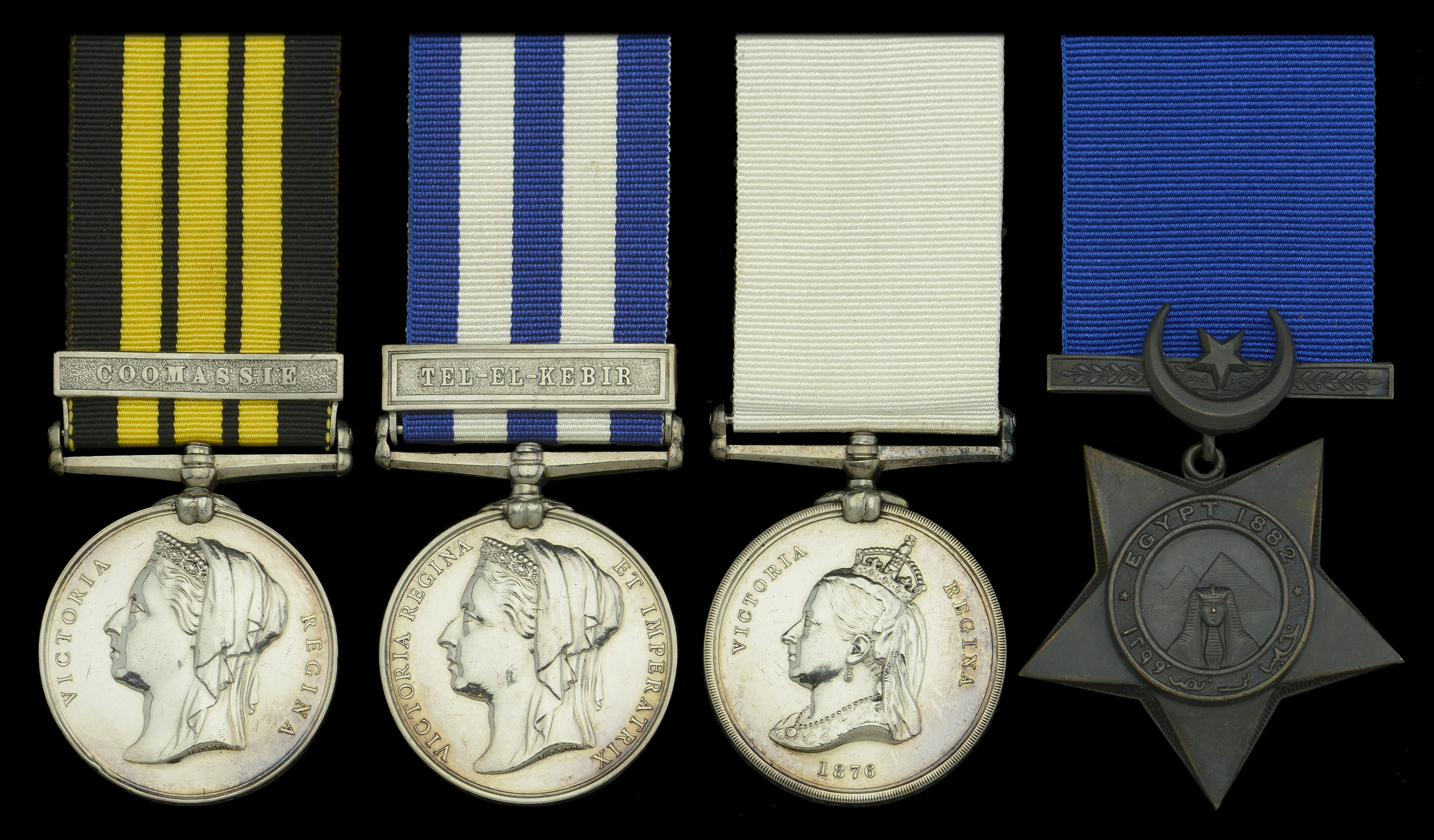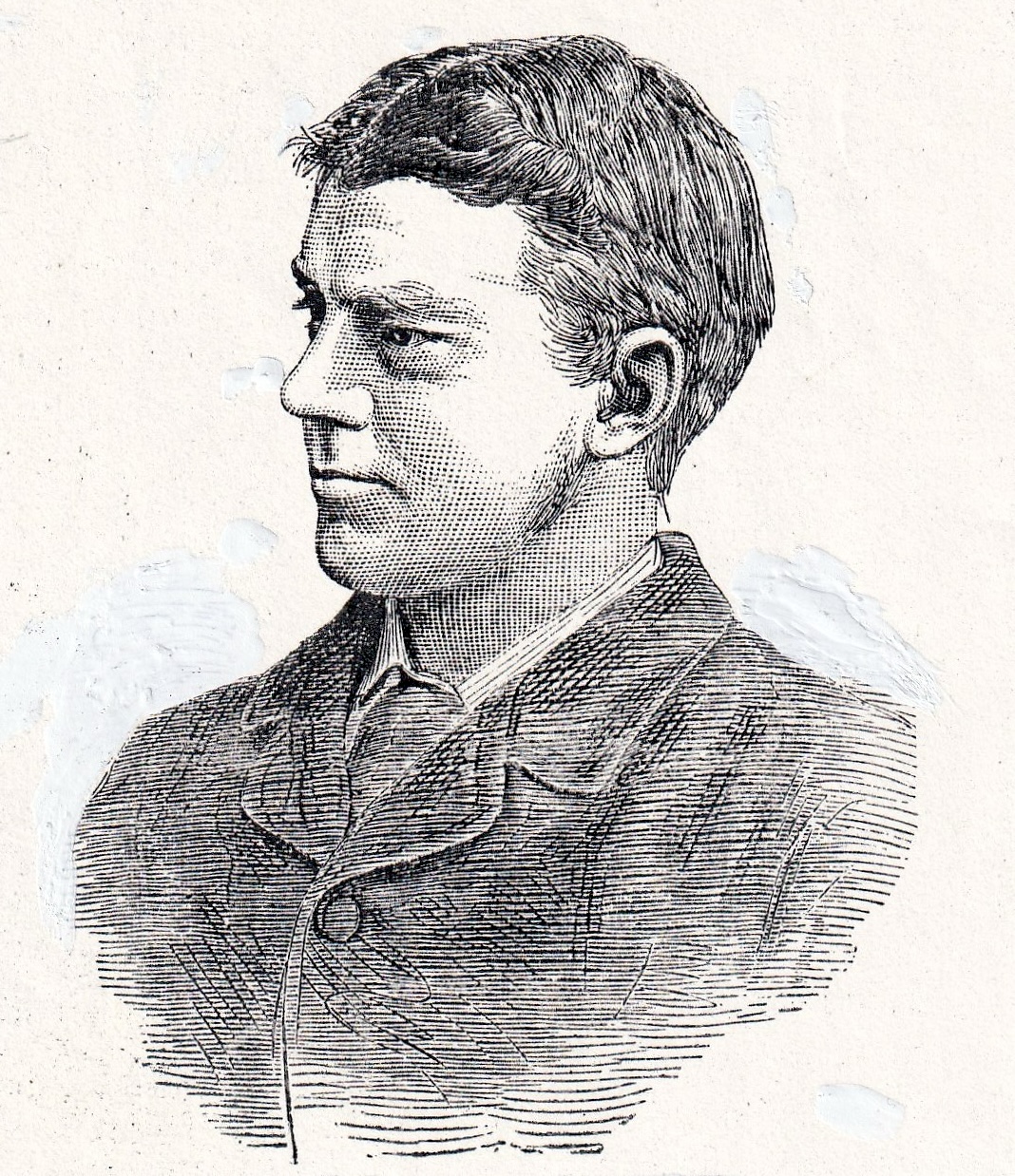Commander Wyatt Rawson, R.N.: “Did I not lead them straight?” Sir Garnet Wolseley: “You did, old fellow, and I know you were well to the front.” A famous exchange as Rawson lay mortally wounded after navigating the Highland Brigade through the night by the stars to Tel-el-Kebir in September 1882; ‘No man more gallant fell that day,’ wrote Sir Garnet, in recommending his Naval A.D.C. for posthumous promotion. The exceptional Victorian exploration and campaign group of four awarded to Commander Wyatt Rawson, Royal Navy, whose sledging exploits in the Arctic Expedition of 1875-76 are the stuff of legend, his 132 days on the ice witnessing much hardship and many adventures, exploits that are today commemorated by the appropriately named Cape Rawson and Mount Wyatt Earlier, in the Ashantee War, in which he was wounded at the battle of Amoaful in January 1874, he was twice mentioned in despatches and specially promoted to Lieutenant, but it was for his navigation of Sir Garnet Wolseley’s desert force through the night to Tel-el-Kebir and subsequent death that he is perhaps best remembered Ashantee 1873-74, clasp, Coomassie (Lt. W. Rawson. R.N. H.M.S. Himalaya. 73-4); Egypt & Sudan 1882-89, 1 clasp, Tel-El-Kebir (Comdr. W. Rawson. R.N. A.D.C.); Arctic Medal 1875-76 (Lt. W. Rawson. R.N. H.M.S. Discovery.); Khedive’s Star, dated 1882, some minor marks, otherwise nearly extremely fine (4) £40,000-£50,000 --- Importation Duty This lot is subject to importation duty of 5% on the hammer price unless exported outside the UK --- --- Provenance: Alan Hall Collection, June 2000, acquired privately from the Douglas-Morris Collection. The ‘Coomassie’ clasp is unique to H.M.S. Himalaya. Wyatt Rawson was born in Beaumaris, Anglesey, Wales on 17 August 1853, the youngest son of Christopher Rawson; his elder brother rose to be Admiral Sir Harry Holdsworth Rawson, K.C.B. Young Wyatt passed some of his formative years in Canada, where he gained his first taste of sledging and ice work, prior to following in his brother’s footsteps and joining the Royal Navy as a Cadet in Britannia in May 1867. Appointed a Midshipman in H.M.S. Minotaur in the following year, he removed to the Narcissus in December 1870 and was advanced to Sub. Lieutenant in January 1873. A year later, Wyatt joined the Himalaya as an Acting Lieutenant, the commencement of his distinguished part in the Ashantee War, in which he served ashore on attachment to Active’s Naval Brigade and was severely wounded by a bullet in the thigh at the battle of Amoaful on 31 January 1874. He was twice mentioned in despatches for his valuable contribution to the Brigade’s transport services, the second of those ‘mentions’ from Commodore Hewett stating: ‘He did very excellent work while attached to the Land Transport Service, not only for the Naval Brigade but also in assisting the Control which has been very noticeable. His energy and tact did much to encourage the carriers, and as there was often very great difficulty in procuring people to transport stores and provisions to the front, the value of Mr. Rawson’s services cannot be over-rated. There being a vacancy in the Himalaya for a Lieutenant, I gave this officer an acting order to fill it, and he has proceeded to England in that ship.’ That special promotion to Lieutenant was confirmed 31 March 1874 and, no doubt, came with the blessing of Sir Garnet Wolseley, who, by all accounts, had been much impressed by the young naval officer. When, soon after his return to the U.K., it was announced that Arctic exploration was to be resumed through Government agency, young Rawson was, according to his obituary notice in the Royal Geographical Society’s Journal, ‘one of the foremost and most eager of the volunteers and was appointed Third Lieutenant of the Discovery in April 1875.’ On arrival in Arctic waters, in Lady Franklin Bay, Rawson was transferred to the Alert, the expedition’s second ship, in order to report back to Captain Nares in the Discovery the former’s selected wintering position, when known. He consequently joined the Alert with a sledge crew in late August 1875, but his efforts to get back over the ice to the Discovery in October were thwarted by prevailing conditions. By way of consolation, the furthest point he and his sledge crew reached was subsequently named Cape Rawson. A tough winter in the Alert ensued, when it is said the long, dark hours were brightened by Rawson’s cheerful disposition. And with the return of the sun in the Spring of 1876, he set off once more for the Discovery, this time travelling with Lieutenant Egerton and the Danish dog-driver Petersen, with nine dogs. What followed was a nightmare struggle for survival, Petersen in particular succumbing to frostbite, his feet and hands remaining frozen. But for the exertions of Rawson and Egerton, the Dane would certainly have died. At one point, as they struggled to regain the Alert, the dogs bolted past Rawson, who held on to their harness for dear life, and was dragged along by them. But his iron grip saved the day and Alert was reached that evening. Captain Clements Markam, who had accompanied the Alert as far as Greenland, later wrote: ‘The work of these two young officers on this occasion stands out conspicuously amongst the many deeds of devotion to which the annals of Arctic adventure abound.’ Of subsequent events, an excellent summary appears in the above quoted obituary notice: ‘Rawson and Egerton started again on their perilous errand on March 20th, and, after many adventures and much hardship succeeded in reaching the Discovery on the 24th. Rawson was incessantly employed on sledging work for the remainder of the season. Returning to the Alert on April 4th, he pioneered a route across Robeson Channel to the Greenland coast from the 10th to the 18th, and again crossed to Greenland with Lieutenant Beaumont. Rawson accompanied that distinguished Arctic traveller along the northern coast of Greenland until May 10th, when the two explorers ascended a hill, afterwards named Mount Wyatt, 2050 feet above the sea. The return journey was then commenced by Rawson, with a dying man on the sledge, and he reached Polaris Bay on June 3rd. From that time, his services were devoted to the succour of returning explorers. On one occasion he attacked and killed a musk ox without a gun, and armed only with a stick and a knife which he fastened to the end of it; ever on the lookout to procure fresh meat for the sick. On the 22nd he started on a journey for the relief of Beaumont, and he did not return to his ship until August 3rd. He was away sledge travelling for 132 days; and his coolness and sound judgment, indomitable perseverance and inspiring cheerfulness showed him to possess all the highest qualities of an Arctic explorer.’ Yet he was still just 23 when the expedition returned home in November 1876. In the following year, he was appointed to the Alexandra, bearing the flag of Admiral Hornby in the Mediterranean, and he continued to serve on that station and in the Sea of Marmora until 1880, when he was invalided home to the R.N.H. Haslar, suffering from rheumatic fever. Having then in the interim married Maud Hegan, to whom he had been attached for several years, he joined the corvette Champion on the Pacific station. And his next appointment, to the royal yacht Victoria & Albert in October 1881, made his future advancement all but certain. Meanwhile, however, plans were afoot for the campaign in Egypt and, mindful of his earlier encounter with Rawson in the Coomass...









